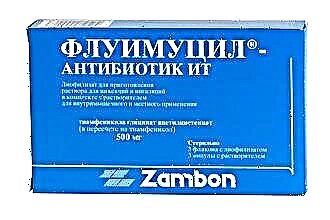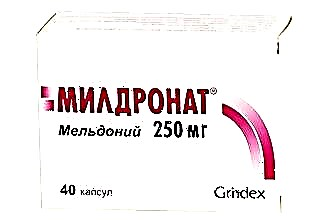Inhalation for laryngitis, along with rinsing, is the most effective topical treatment. This is due to the fact that laryngitis is an inflammation of the pharyngeal mucosa. This area is completely open to external influences and direct access of medicinal compounds.
 For the delivery of active substances, neither systemic therapy nor parenteral injections are required.
For the delivery of active substances, neither systemic therapy nor parenteral injections are required.
The inhalation route of administration allows drugs in the form of vapor or aerosol suspensions to fall directly on the laryngeal mucosa.
Moreover, subject to the rules of implementation, these procedures are completely safe and available for carrying out even in young children.
Clinical effect of inhalation
Inhalation administration of drugs for laryngitis allows you to achieve several beneficial therapeutic effects at once:
- reducing the viscosity of the mucous component in the larynx and simplifying the excretion of mucus;
- moisturizing the mucous membrane, softening it;
- suppression of inflammatory reactions;
- regulation of vascular tone in the capillaries of the throat and a decrease in the severity of edematous phenomena;
- stimulation of regenerative processes on the mucous membrane.
In addition, depending on which pharmacological agent is used during the procedure, the following are added to the general effects:
- mucolytic and expectorant action;
- prevention of laryngo- and / or bronchospasm;
- antimicrobial action; throat anesthesia.
How is this procedure carried out?
Inhalation with laryngitis is recommended in three ways:
- Steam over the tank.
- From a teapot with a paper cone.
- Using a nebulizer.
 If you are using the simplest first method, then you will need a container with a wide top, for example, a wide, but not very deep saucepan. A substance is placed in this container, which, in fact, will give steam. The medicinal substance must be warmed up well enough so that evaporation occurs from its surface. The patient needs to bend over the pan, throw a large towel over himself so that its edge lies on the table, and begin to inhale the vapors through his mouth. For inhalation, using a kettle, pour the solution into this dish, and insert a cone twisted from thick paper into its spout with the narrow end.
If you are using the simplest first method, then you will need a container with a wide top, for example, a wide, but not very deep saucepan. A substance is placed in this container, which, in fact, will give steam. The medicinal substance must be warmed up well enough so that evaporation occurs from its surface. The patient needs to bend over the pan, throw a large towel over himself so that its edge lies on the table, and begin to inhale the vapors through his mouth. For inhalation, using a kettle, pour the solution into this dish, and insert a cone twisted from thick paper into its spout with the narrow end.
The wide end of the cone will serve as a kind of mask through which the patient will inhale the vapors. The longer the cone, the lower the temperature of the evaporated liquid, but also the greater the loss of medicinal substances deposited on the paper walls.
The medication administered by inhalation with a nebulizer will not have as high a temperature as in previous cases. But you need to be able to use this device, as well as prepare medicinal mixtures and fill them there. It is not difficult and even a child can master this procedure. It is even easier to use ready-made preparations in disposable bottles with throat dispensers. Ingalipt is a prominent representative of such pharmacy medicines. When inhaled with a nebulizer, breathe evenly, slowly and deeply. After inhaling, accompanied by spraying the drug, hold your breath for 3-4 seconds - this will help the drug settle on the mucous membranes of the throat and underlying parts.
Important! If, with inhalation treatment of laryngitis at home, clinical improvement is not observed for 2 days, then an ENT doctor should be consulted. The specialist will select the optimal therapy regimen and more effective drugs.
In addition, if you are prescribed more than one drug, the sequence in which the drugs are administered is also important. The correct application scheme looks like this:
- Funds for expanding the bronchi (they are not always prescribed). Such substances will prepare the respiratory system for further pharmacological effects, relieve swelling and provide deeper penetration of drugs. This is important, since lesions in laryngitis can spread lower along the bronchial tree, which means that preventive measures must be taken.
- Then mucolytic drugs are injected. With the help of these funds, the phlegm that has accumulated in the larynx is liquefied. Such mucus is a breeding ground for pathogenic bacteria and covers the mucous membrane, preventing the access of medicinal substances there. Mucolytics usually have an expectorant effect at the same time, that is, the liquefied sputum will be excreted by coughing.
- After the cough has passed, medications are used to directly affect the cause of the disease: anti-inflammatory, disinfectant, antimicrobial, etc.
The pauses between these three stages of inhalation treatment with various types of pharmacological agents should be about 15-20 minutes. After the end of these procedures, it is useful to carry out another 1-2 inhalations with less intensely active substances, for example, medicinal herbs.
Which way to choose?
The choice of which method of inhalation to use specifically in your case depends, first of all, on the cause that caused the laryngitis. Most often, this disease does not occur by itself: a lesion of the pharynx is one of the symptom complexes that develop with angina, acute respiratory viral infections and other pathologies of the upper respiratory tract. In these cases, inflammation of the mucous membrane is provoked by pathogenic microflora. And here it is not particularly important which method of inhalation will be used. The main thing is that the method corresponds to the applied therapeutic agent (for example, inhalation of chopped garlic with a nebulizer will not work).
But with autoimmune and / or allergic lesions, the mandatory administration of specific pharmacological drugs is required. So, for example, with laryngitis of a similar nature, you need to do inhalation with hydrocortisone. And in this case, the use of a nebulizer will be the best solution. This will make it possible to accurately dose the amount of the administered drug, ensure its complete delivery to the affected area and significantly reduce the consumption of the drug without losing its therapeutic efficacy.
Inhalation products
In order to cure laryngitis at home, inhalations must necessarily include specific pharmacological drugs. They are administered using nebulizers. Only an ENT specialist has the right to determine the type and dosage of these drugs. Most often, the following medications are used for laryngitis:
 Fluimucil (aka ACC), Lazolvan and other products containing ambroxol. These drugs thin the accumulated phlegm and stimulate a cough in a short period of time. This clears mucus from the upper respiratory tract. Before inhalation, the drug is dissolved in an equal volume of physiological solution.
Fluimucil (aka ACC), Lazolvan and other products containing ambroxol. These drugs thin the accumulated phlegm and stimulate a cough in a short period of time. This clears mucus from the upper respiratory tract. Before inhalation, the drug is dissolved in an equal volume of physiological solution.- Fluimucil is an antibiotic IT that combines antibacterial, mucolytic and expectorant effects. Unlike the previous drug, which it resembles in name, the active compound here is thiamphenicol, not acetylcysteine. This and other antibiotics are used for an infectious cause of laryngitis. Sometimes, in the early stages of the disease, the local antimicrobial effect can be completely cured without switching to systemic antibiotic therapy.
- Pure saline or mineral water free of carbon dioxide bubbles. These funds will provide sufficient hydration and softening of the irritated and dry inflammatory process of the pharyngeal mucosa.
Important! If, during the inhalation of the drug, the patient develops lacrimation, shortness of breath, runny nose and other uncharacteristic manifestations, the procedure must be stopped immediately. These symptoms are an indicator of individual drug intolerance.
Separately, it should be said about what inhalations are carried out for allergic laryngitis. This disorder is associated with severe swelling of the upper respiratory tract and narrowing of the bronchi. The first treatment should be an antihistamine tablet. Next, you need to apply bronchodilators and start inhalation with dexamethasone and other glucocorticosteroids. Treatment with hydrocortisone for laryngitis of an allergic nature usually has a course character and includes 1-2 procedures every day for a week. Inhalation with prednisone or other hormones can only be prescribed by a doctor who determines the dosage and treatment regimen.
Folk recipes
Such means for inhalation will not always be an effective medicine that will cure the disease. But with laryngitis, these procedures will serve as an excellent addition to the main therapy. Inhalation of such substances is usually carried out by inhaling vapors from a wide container or kettle. The duration of inhalations is no more than 15 minutes, and it is recommended to carry them out 4-5 times a day.
Most often, inhalation with laryngitis is recommended to be done with  decoctions and infusions of medicinal herbs:
decoctions and infusions of medicinal herbs:
- chamomile;
- Hypericum perforatum;
- calendula;
- oregano;
- mother-and-stepmothers;
- mint;
- raspberry leaves;
- wild rosemary;
- yarrow;
- sage;
- juniper, etc.
To obtain an inhalation solution, a dry phytopreparation is taken in the proportion: 1 tablespoon per glass of water. Next, the liquid is boiled for 15-20 minutes in a boiling water bath and insisted in the heat for another half hour. Right before the procedure, already in a working container, it is necessary to dilute the resulting broth with an equal volume of boiling water.
To enhance the effect of such an inhaler preparation, it is recommended to add a few drops of essential oils there.
A few more of the most effective recipes:
- Dissolve 2 tablespoons of baking soda in half a liter of water. You can add the same amount of kitchen salt and 10 drops of iodine there.
- Add 15 drops of eucalyptus leaf extract to 300 ml of hot water. For children, this dosage is reduced by 2 times. Another option is to put 1 teaspoon of dry eucalyptus leaves in a glass of water and heat in a boiling water bath for 10-15 minutes.
- Mix equal amounts of currant leaf, thyme, and coltsfoot. For half a liter of water, take 2 large spoons of the mixture and prepare as described above for individual herbal remedies.
- Chop one medium onion and / or 5 garlic cloves. Pour 0.5 liters of boiling water over the gruel. Products are useful and combine, but then you need twice as much water.
We are often asked if it is possible to breathe over potatoes with laryngitis. Yes, it is a useful tool. Boil the potatoes in their skins, drain the water and mash the root vegetables. Immediately after this, you need to start inhalation. To enhance the therapeutic effect, put 5-7 drops of iodine on the potatoes. Another option is to add the same amount of eucalyptus leaf extract.

 Fluimucil (aka ACC), Lazolvan and other products containing ambroxol. These drugs thin the accumulated phlegm and stimulate a cough in a short period of time. This clears mucus from the upper respiratory tract. Before inhalation, the drug is dissolved in an equal volume of physiological solution.
Fluimucil (aka ACC), Lazolvan and other products containing ambroxol. These drugs thin the accumulated phlegm and stimulate a cough in a short period of time. This clears mucus from the upper respiratory tract. Before inhalation, the drug is dissolved in an equal volume of physiological solution.

